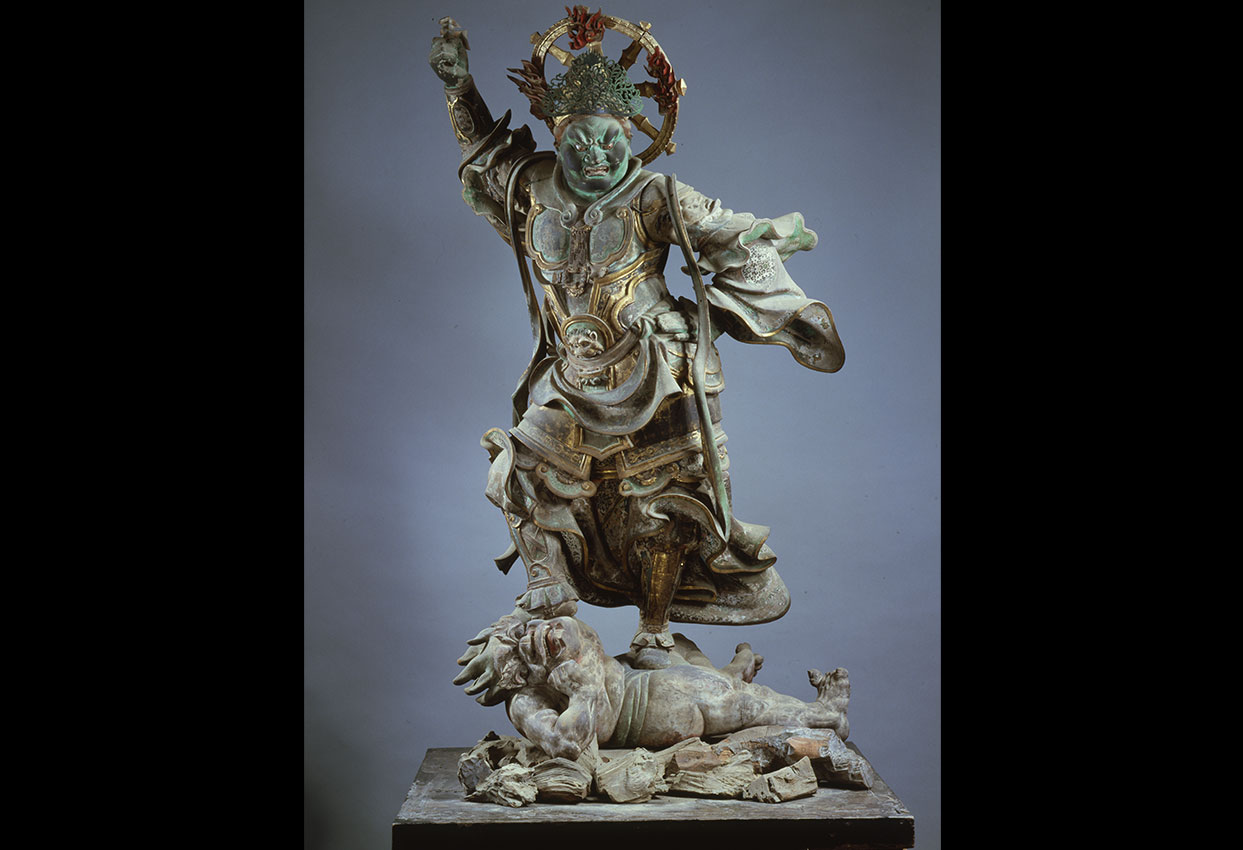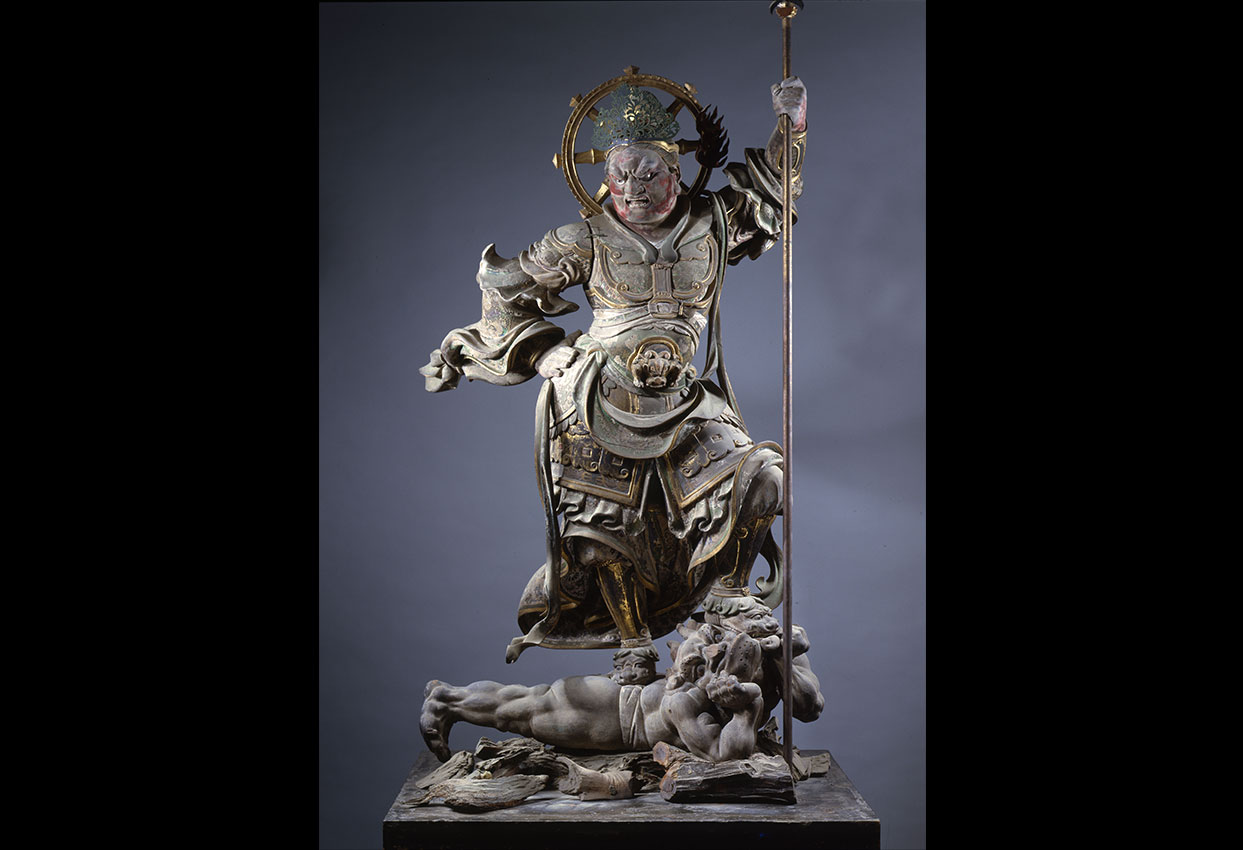14. Statues of the Four Heavenly Kings
Present alongside Kannon on the dais are statues of four Buddhist deities that have their roots in ancient Indian mythology. There they are portrayed as the guardians of the world who fight against evil and command troops of supernatural creatures to defend the Buddhist teachings.
In Japan they are known as the Four Heavenly Kings (Shitenno), each of whom is charged with watching over one of the four cardinal directions. Tamonten is the protector of the north; Zochoten guards the south; Komokuten keeps his eye on the west; and Jikokuten is king of the east. The statues are positioned at the four corners of the dais to indicate the corners of the world they are charged with protecting.
Inscriptions on the dais indicate that the statues were carved in 1289 and painted seven years later. The superb craftsmanship employed as well as the exquisite coloring and overall condition of the images led them to being registered as Important Cultural Properties in 2018.
The statues display elements that reflect the times in which they were made. Each king can be seen trampling on a demonic creature; and the kings’ victorious poses, not to mention their military armor, are suggestive of samurai warriors, whose power was not only in the ascendancy during the thirteenth century but who were also increasingly influenced by Buddhism.





